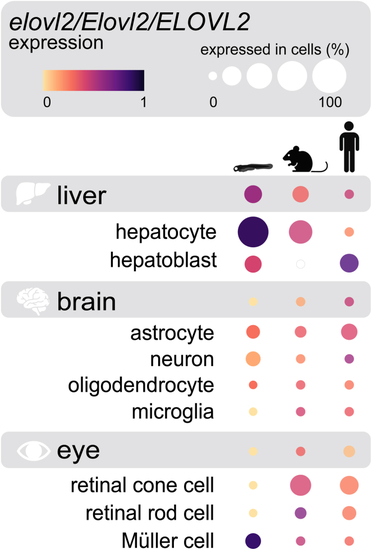
Zebrafish, mouse, and human central nervous system tissues express elovl2/Elovl2/ELOVL2, respectively, a critical gene in the DHA biosynthesis pathway. In all three organisms, liver cells strongly express elovl2/Elovl2/ELOV2, whereas brain and eye cell-types express this gene at comparatively lower levels. Dot colors represent normalized expression levels (ranging from 0 to 1) for a particular organism, tissue, or cell-type. For each organism, expression comparisons can be made between tissues, eg, liver versus brain (grey boxes), as well as between cell-types within a given tissue, eg, astrocyte versus neuron. Dot sizes are scaled to indicate the percentage of each cell-type that expressed the gene of interest. Mouse and human expression patterns are from aggregated datasets submitted to the CZ CELLxGENE Discover platform (doi: 10.1101/2023.10.30.563174; https://cellxgene.cziscience.com/gene-expression). Zebrafish expression data (4 dpf larvae) are sourced from the Daniocell datasets and online resource (https://daniocell.nichd.nih.gov/index.html). Schematic design was inspired by the CZ CELLxGENE Discover online portal. Organism and tissue images were created using BioRender.com.
|

